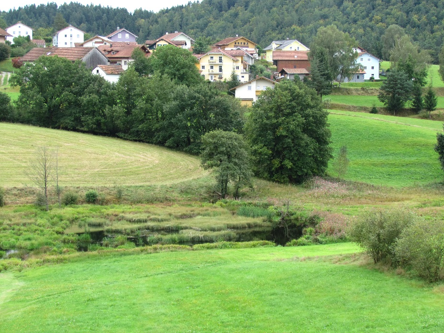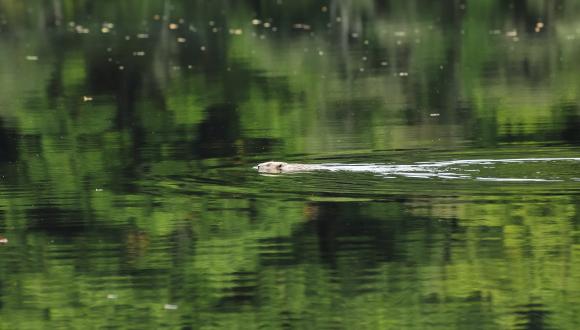Beaver Mitigation - Support through Government grant schemes
Support available through Government funding for delivering environmental benefits, including reducing beaver conflicts with land-use.
The Beaver Mitigation Scheme offers advice and practical support to land managers with mitigation such as tree protection, installing flow devices in beaver dams and trialling novel approaches as appropriate. NatureScot can also licence beaver management activities in certain circumstances. Support is also available through existing government schemes to help land managers to adopt management changes that could help them live alongside beavers whilst delivering a range of other public benefits. These benefits include to wider biodiversity, to water quality, managing flood risks, mitigating and adapting to climate change. This guidance outlines what support is currently available through these schemes.
NatureScot encourages land managers experiencing beaver impacts to consider if these options would be applicable to their situation. Looking to the future, NatureScot is working with the Scottish Beaver Advisory Group (SBAG) to ensure there is continued support available to land managers for beaver mitigation and to influence the design of future schemes to support land managers in making space for nature and building ecosystem resilience.

Credit: Roisin Campbell-Palmer
Beaver activity is typically experienced within 10-20 metres of wetlands or watercourses (Campbell-Palmer et al., 2016); although their impact on the water table may be experienced over a greater area where field drains are influenced. Broadly there are three key areas suitable for funding that may assist with reducing beaver conflicts; Water margin management, Wetland management and River resilience including Riparian woodland planting and management. All have existing support available through government grant schemes. There are also novel funding streams such as the Nature Restoration Fund which could be applicable where no grant funding applies and for larger collaborative/ transformational projects.
Agri Environment Climate Scheme (AECS)
In October 2021 Ministers confirmed that the Agri Environment Climate Scheme (AECS) will be available up to and including 2024. Link to the scheme website and dates for the 2023 application round. The scheme is competitive and all applications will be assessed according to the process set out, the best chance of success is likely where applications are delivering broad public benefits and value for money. Link to scoring criteria for the 2023 application round.
Table 1. Relevant Management options available through AECS
Further information on eligibility guidance on options and items and their supporting guidance may be accessed on the AECS webpages linked below.
|
Option |
Payment rate |
|---|---|
|
£495.62 per hectare per year. |
|
|
£495.62 per hectare per year. |
|
|
£123.42 per hectare per year. |
|
|
Converting arable at risk of erosion or flooding to low-input grassland |
£284.80 per hectare per year. |
|
£90.03 per hectare per year for management Or £284.80 per hectare per year for creation and management |
|
|
£57.43 per hectare per year. |
For example, if the edge of a field next to a burn or drainage channel regularly floods where beavers are present, having a larger water margin could help to reduce ongoing conflicts. For larger areas or naturally wet corners, wetland management options could be considered.
Table 2. Capital items available to support management options:
|
Management option |
Capital item |
|---|---|
|
Restoring (protecting) river banks
|
Willow spilling: £185 / metre
Plant roll revetment: £210 / metre
Hurdle and coir matting: £65 / metre
Engineered log jams: actual costs, up to a max of £210 / metre
|
|
Payment will be made on an actual cost basis, upon completion of the work. |
For example where beavers are burrowing into river banks, appropriate river restoration techniques could help to increase the resilience of banks or in some situations it may be beneficial to move embankments back from the watercourse reducing the likelihood of beaver impacts and flooding.
If you wish to apply to AECS in relation to beavers please contact NatureScot to discuss before submitting your application. You should make contact as early as possible and at least a month before the closing date to allow time for a response.
Riparian woodland creation or expansion can also assist bank resilience as tree roots bind soils and stabilise banks. Woodland can be created and managed with grant funding through the Forestry Grant Scheme and for smaller areas support through the Woodland Trust can be accessed. There is also an AECS capital item Small-scale Tree and shrub planting which could be utilised as part of an AECS application, which must be combined with grazing protection (funding available as an associated capital item) there is a payment of £3.00 per tree or shrub planted.
Forestry Grant Scheme
The FGS is a competitive scheme and open to applications all year round, and will remain open for applications in its present form until at least 2024.
Woodland creation
Farmers planting woodlands are still eligible for the Basic Payment Scheme. Read more on the Scottish Forestry website: Growing trees and your business at the same time.
Payment rates relate to the kind of woodland being created, each of which has a prescribed planting density. A higher rate can be paid if the woodland is in a target area such as a SEPA Woodland for Water target area. (Mapviewer)
Woodland Creation Options are available through the Scottish Forestry Grant Scheme.
Woodland Improvement Grants
The grant support for this category includes a range of options for managing existing woodlands. The aim of this option is to provide capital grants for a range of activities that will:
- encourage natural regeneration and benefit priority habitats and species
- increase species and structural diversity through low impact silvicultural systems management
- contribute to the sustainable management of urban woodlands and improve public access
- support the preparation of forest and / or management plans that set out management objectives for the woodland
- improve the biodiversity, resilience, and structural diversity of even aged woodlands
Woodland Improvement Grants are available through the Scottish Forestry Grant Scheme.
Please contact your local Conservancy for advice on woodland grants.
Nature Restoration Fund
The Nature Restoration Fund (NRF) is a competitive fund launched in July 2021, which specifically encourages applicants with projects that restore wildlife and habitats on land and sea and address the twin crises of biodiversity loss and climate change. At COP26 the Scottish Government announced an expansion to the Nature Restoration Fund, comprising at least a further £55m over the next four years, with at least £12.5m annually. For details of funding rounds and how to apply visit the NRF - How to Apply web page.
Fund priorities are:
- Habitat and species restoration – management for enhancement and connectivity
- Freshwater restoration, including restoring natural flows in rural catchments
- Coastal and marine management to promote restoration and resilience
- Control of invasive non-native species impacting on nature
All project proposals must demonstrate how the project will help to address climate change and/or its impacts. This kind of funding could help to deliver river resilience work on a landscape scale covering works that may not be fundable through government grant schemes and so would lend itself to collaborative action and may be used in combination with other work funded through grant schemes.




